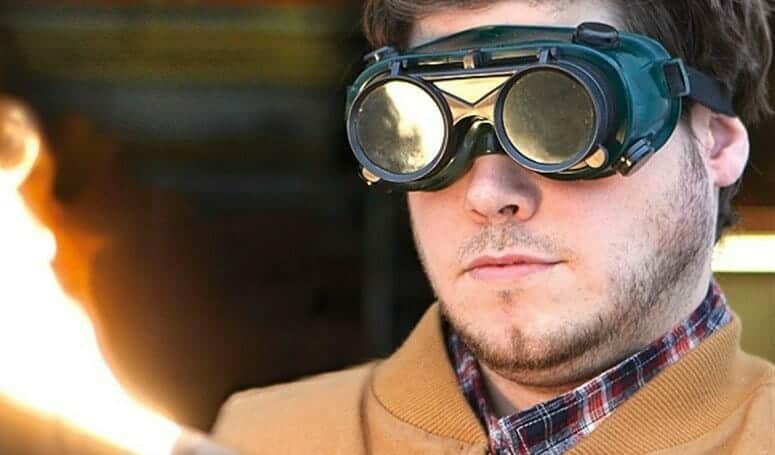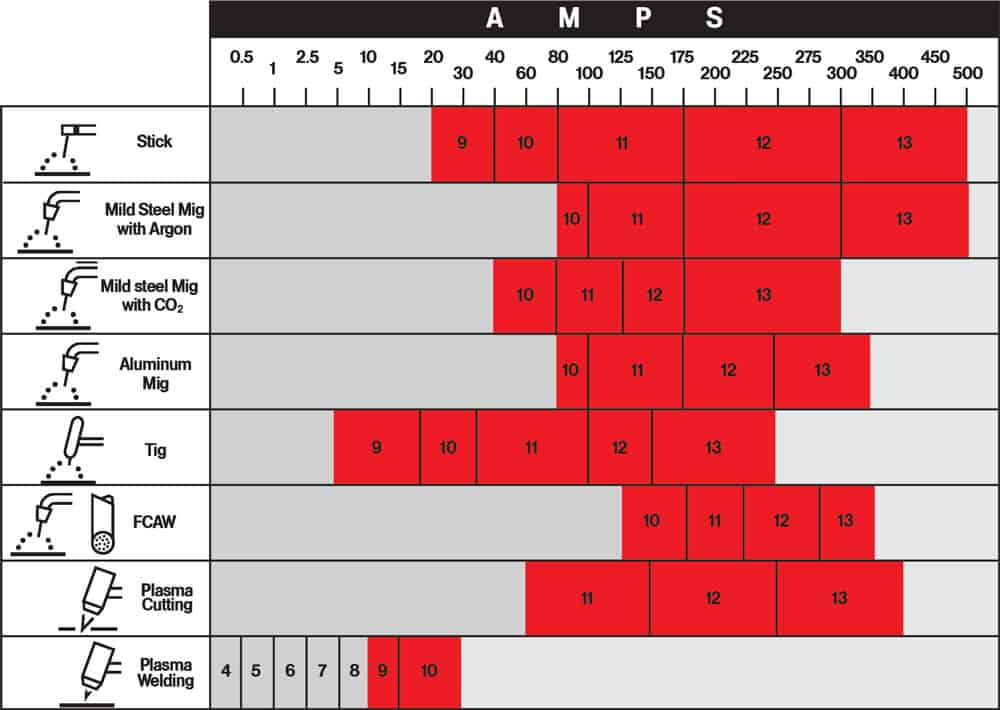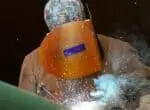Welding is considered to be a risky business that exposes the eyes to similar damages that the Sun does. Although true to a certain extent, it isn’t entirely true.
The amount of UV rays, infrared rays, and heat produced during welding are different when compared to what the Sun produces. Besides, welding exposes the eyes to sparks, intense heat, and flames which the Sun does not.
Clearly, the extent and nature of dangers are different. And that’s why you should not use welding glasses as sunglasses.
Indeed a debatable topic (since people do wear welding glasses as sunglasses), we have explained all the differences between welding glasses and sunglasses in this guide. Dive in to understand why you shouldn’t use welding glasses in place of sunglasses.
Can You Use Welding Glasses as Sunglasses?
The straightforward answer is no. No, you should not use welding glasses as sunglasses since the purpose of both types is different.
However, people do use welding glasses as sunglasses at times. In fact, even the reverse happens. Considering the safety, it’s not a wise choice to wear welding glasses as sunglasses and vice-versa.
Top 2 Key Differences Between Welding Glasses and Sunglasses
Had the two served the same purpose and offered the same kind of protection, they wouldn’t have been categorized as different products, to begin with. Since they are different, naturally you shouldn’t use them interchangeably.
That being said, let’s now find out the key differences between welding glasses and sunglasses. It will help you in understanding clearly why you should not use welding glasses as sunglasses despite there being no legal restriction!
#1. Materials They’re Made Of
Materials to make welding glasses:
The lenses in welding glasses are mostly made of a material known as Didymium. Didymium plays the role of a band filter material that absorbs the yellow light at 589 nm. This particular band filter blocks UV rays and infrared rays produced during welding.
-
-
- Didymium is robust. It offers protection from flames and sparks too.
- It resists and blocks heat to pass through like nothing else.
- It is very tough and puncture-resistant. Hence, it prevents eye injuries.
-
Materials to make sunglasses:
The lenses in sunglasses are made of high-index plastics or polycarbonate or Trivex. There are certain differences between the types like their weight, but the one thing that’s a constant is 100% protection from UV rays.
-
-
- These materials have a very high impact resistance.
- They’re designed to reduce glare.
-
#2. Level of Protection They Offer
Welding Glasses:
Exposure to intense heat is the biggest danger in welding. Did you know that arc temperature during welding is a whopping 6000°C to 11,000°C? Not only can it damage the Cornea, but it can also damage the Retina. It can also cause blindness.
Naturally, sunglasses (no matter how tinted they are) cannot block such high levels of heat since the materials used to make lenses for sunglasses are not designed keeping this danger in mind.
Welding glasses, on the other hand, block heat and bright light up to 90% and even more. If not for the didymium, the Retina and Cornea could be easily injured while welding.
Sunglasses:
UV rays from the sun are lethal. Only those sunglasses that are marked UV 400 can block all the harmful infrared and UV rays.
Here’s another thing you need to know about why sunglasses cannot be used for welding: It’s because different sunglasses offer protection from different dangers.
Some glasses offer protection from UV rays and some others block light. If you think that a highly tinted sunglass will always offer protection from UV rays, then, we’d say, think again.
The tint of a sunglass has nothing to do with UV light. The shade number decides the amount of comfort that the glasses will provide from light.
So, as we said, no matter the tint, look for UV400 sunglasses if you want to protect your eyes from sun damage.
What do Welding Shade Numbers Mean?
As someone who’s even remotely associated with welding, you must be aware of the shade numbers for welding glasses.
You can explain shade numbers in the following ways.
1.) Shade numbers (in welding glasses as well as sunglasses) indicate the amount of light (brightness and glare) that the lenses can block.
2.) The higher the number, the less heat (other rays) passes through the glass.
According to the type of welding you’re doing (whether it’s being done to cut or weld metal and which method is being used), the ideal shade protection for welding goggles is between 8 to 13.
Another possible way to explain the shade number is the darkness of the glass. The higher the number, the darker the glass is, and the more light it will block.
When you talk about shade protection that sunglasses should offer, if you have to directly look at the Sun during an eclipse, it should be no less than 14. Clearly, yet again, not all welding glasses offer this level of shade protection.
Pros and Cons of Using Welding Glasses as Sunglasses
Although it’s already established that one should not wear welding glasses as sunglasses, if for any reason, you do decide to go ahead, you should be aware of the pros and cons, both.
Here’s a small section that sheds light on what to expect when wearing welding glasses as sunglasses.
Pros of Wearing Welding Glasses as Sunglasses
√ They’re extremely robust and tough. Hence, your eyes will not get injured due to external factors since the glass won’t easily shatter.
√ You’ll be able to save money.
Cons of Wearing Welding Glasses as Sunglasses
⊗ Welding glasses with your regular apparel will look like fashion blunders.
⊗ There’s going to be the constant danger of UV damage.
FAQs:
1.) Do welding glasses block UV?
Yes. Welding glasses that are ASTM and OSHA-approved block UV rays. Since different sorts of welding types produce differing levels (and types) of UV rays, you should buy the welding glasses accordingly.
Buy the highest shade of welding glasses when UV rays produced are maximum.
2.) How dark should welding glasses be?
It entirely depends upon the type of welding method. Here’s the list:
-
-
- For welding – 8 to 13.
- For cutting – 5 to 8.
- For grinding – 3.
-
3.) How dark should sunglasses be?
In terms of tint, sunglasses should block 75-80% light. However, darkness cannot define UV protection in sunglasses.
If you think dark sunglasses will cut down UV exposure too, you might be wrong. Only that sunglass that is UV400 can block UV rays fully.
4.) Are welding glasses safe for eclipse?
We’ve already mentioned that different welding glasses block different levels of UV lights. So, all welding glasses cannot be used to watch a solar eclipse.
Only those glasses that have a shade index of 14 are safe for the eclipse. Anything lower than that can seriously damage your eyes.
See also: Can I Use a Welding Mask to View a Solar Eclipse?
Concluding Thoughts:
Although many people wear welding glasses as sunglasses, it isn’t a safe practice.
The purpose of both types (welding glasses and sunglasses) is different. The level of protection they offer from UV rays, infrared rays, and heat is also different.
For the sake of proper protection, you should never use these glasses interchangeably unless it’s absolutely necessary.
Also, under any condition, do not ever wear welding glasses to watch a solar eclipse.
On a parting note, we hope that you’ll now be able to make an informed decision whether or not you should wear welding glasses in place of sunglasses every single time you step out of your house.









